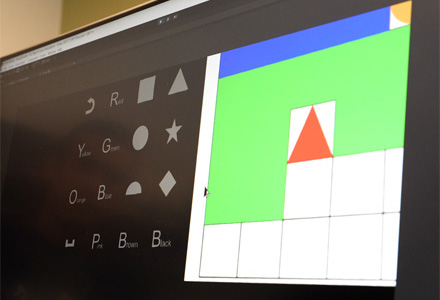In today’s world of overwhelming interconnectivity, it is no surprise that modern college students struggle more with attention and focus than those of previous generations. A rise in Attention-Deficit/Hyperactivity Disorder (ADHD) diagnosis, coupled with students’ 24/7 access to cell phones has made attention something very difficult for some students to develop. The demand to be “on” all the time can be overwhelming, and very few students diagnosed with the condition have options other than drugs to help alleviate symptoms.
However, there is great incentive to create alternative treatments for students with ADHD and those who simply have concentration issues for other reasons. The prevalence of this problem makes it a great opportunity for research and technological development, which is exactly why USF computer scientist Marvin Andujar decided to research brain-computer interface (BCI) adaptations to improve concentration and focus for college students.
More stories: USF Associate Professor Develops Tech To Help Combat Malaria
The BCI technology Andujar is researching reads electrical brain signals to facilitate interaction with external objects. In previous applications, this technology has been used for prosthetic limb movement and drone operation, but now the USF research team is helping students create paintings with their thoughts alone in order to facilitate concentration on a single task.
With Andujar’s BCI brain painting method, participants wear a device lined with sensors and choose from a limited selection of colors, shapes or controls by focusing on one at a time. A blinking light lets the user know when their selection is recognized. This feedback causes a stimulus spike in the parietal lobe (the part of the brain responsible for sensory perception and integration) and is detected by the sensors. These spikes are then classified by an algorithm and saved on project hard drive as a user profile.
“This type of brain-computer interaction is more of a brain exercise to improve your attention,” Andujar said. “We’re trying to see how we can narrow that focus over time.”
More stories: USF School of Hospitality Expands to Meet Industry Demands
The two-year pilot study collected data from USF students who have been diagnosed with ADHD and needed help focusing to pass their classes or complete exams The research was funded by the National Science Foundation, and has been met with highly promising results. If the treatment were to work and be adaptable to home use, it could help many students find alternatives to drug treatment for ADHD. Most students diagnosed with the condition are prescribed Adderall, which can cause disturbances in eating and sleeping patterns and become addictive if misused.
“In the world of technology, with phone and social media, it’s easy to get distracted,” Andujar said. “The idea of BCIs is similar to meditation practices because the mind is required to focus.”
Participants’ improvement is measured by the length of time they can focus on the brain painting. A visual art objective was chosen to facilitate creativity within the students and hold their attention holder than rote exercises. Two versions of the program were created to immerse the participants in the experience – a 2D canvas and a virtual reality (VR) experience where participants can fully immerse themselves in the painting process.
“Art has shown to elicit positive emotions, so with the VR version, we are asking how will concentration and emotion improve when also being immersed inside your own painting?” Andujar said.
Andujar has larger plans for his brain painting project, including a VR art exhibit to allow others to experience brain painting, as well as a series of non-fungible tokens (NFTs) using saved images created by brain-painting artists.




























